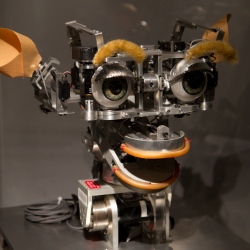
For researchers in the biological sciences, however, the future training of robots has been made much easier thanks to a new program called “PaR-PaR” (Programming a Robot).
Nathan Hillson, a biochemist at the U.S. Department of Energy (DOE)’s Joint BioEnergy Institute (JBEI), led the development of PaR-PaR, a simple high-level, biology-friendly, robot-programming language that allows researchers to make better use of liquid-handling robots and thereby make possible experiments that otherwise might not have been considered.
“The syntax and compiler for PaR-PaR are based on computer science principles and a deep understanding of biological workflows,” Hillson says. “After minimal training, a biologist should be able to independently write complicated protocols for a robot within an hour. With the adoption of PaR-PaR as a standard cross-platform language, hand-written or software-generated robotic protocols could easily be shared across laboratories.”
Hillson, who directs JBEI’s Synthetic Biology program and also holds an appointment with the Lawrence Berkeley National Laboratory (Berkeley Lab) Physical Biosciences Division, is the corresponding author of a paper describing PaR-PaR that appears in the American Chemical Society journal Synthetic Biology. The paper is titled “PaR-PaR Laboratory Automation Platform.” Co-authors are Gregory Linshiz, Nina Stawski, Sean Poust, Changhao Bi and Jay Keasling.
Using robots to perform labor-intensive multi-step biological tasks, such as the construction and cloning of DNA molecules, can increase research productivity and lower costs by reducing experimental error rates and providing more reliable and reproducible experimental data. To date, however, automation companies have targeted the highly-repetitive industrial laboratory operations market while largely ignoring the development of flexible easy-to-use programming tools for dynamic non-repetitive research environments. So researchers in the biological sciences have had to depend upon professional programmers or vendor-supplied graphical user interfaces with limited capabilities.
“Our vision was for a single protocol to be executable across different robotic platforms in different laboratories, just as a single computer software program is executable across multiple brands of computer hardware,” Hillson says. “We also wanted robotics to be accessible to biologists, not just to robot specialist programmers, and for a laboratory that has a particular brand of robot to benefit from a wide variety of software and protocols.”
